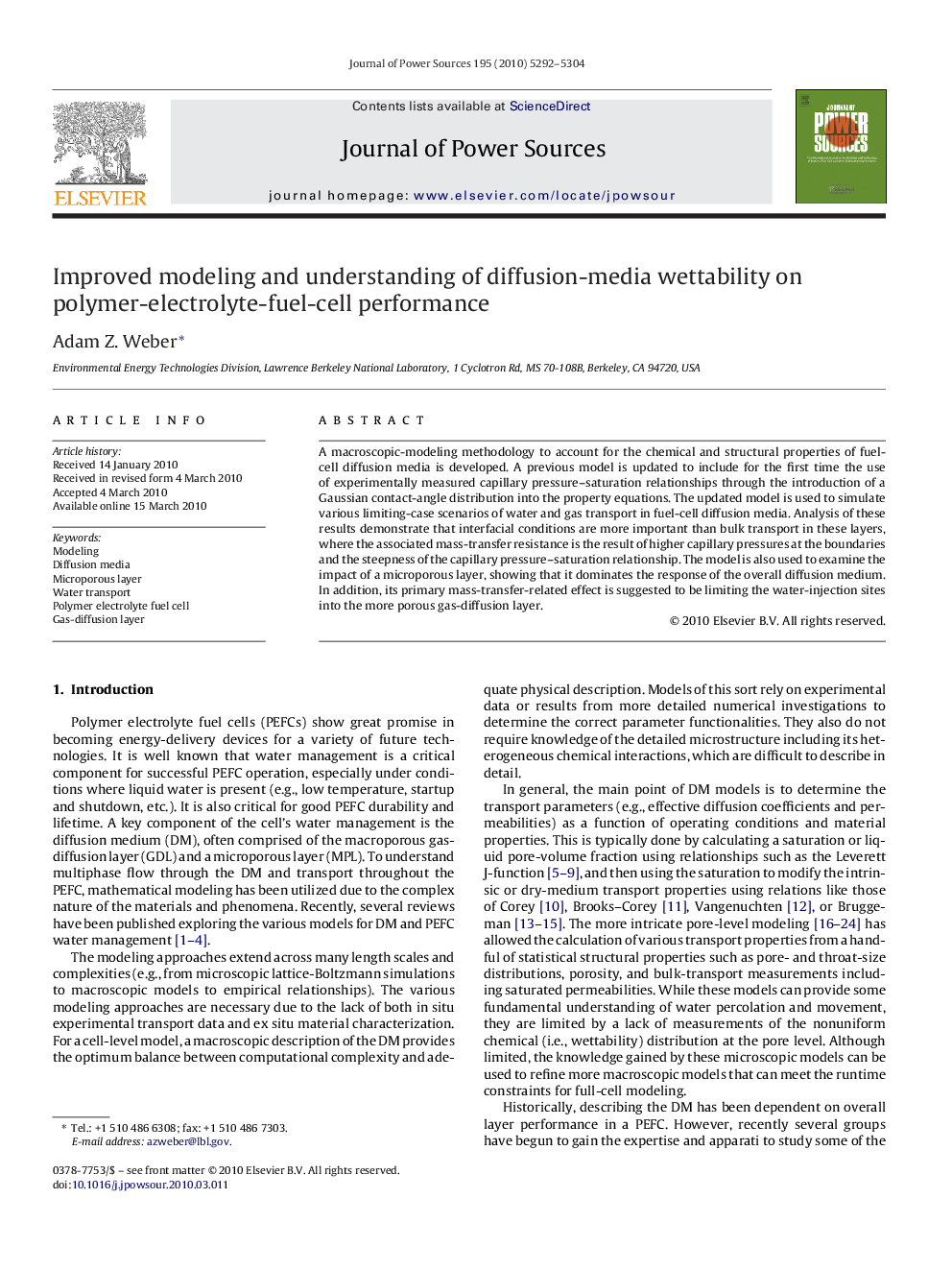| Article ID | Journal | Published Year | Pages | File Type |
|---|---|---|---|---|
| 1284927 | Journal of Power Sources | 2010 | 13 Pages |
A macroscopic-modeling methodology to account for the chemical and structural properties of fuel-cell diffusion media is developed. A previous model is updated to include for the first time the use of experimentally measured capillary pressure–saturation relationships through the introduction of a Gaussian contact-angle distribution into the property equations. The updated model is used to simulate various limiting-case scenarios of water and gas transport in fuel-cell diffusion media. Analysis of these results demonstrate that interfacial conditions are more important than bulk transport in these layers, where the associated mass-transfer resistance is the result of higher capillary pressures at the boundaries and the steepness of the capillary pressure–saturation relationship. The model is also used to examine the impact of a microporous layer, showing that it dominates the response of the overall diffusion medium. In addition, its primary mass-transfer-related effect is suggested to be limiting the water-injection sites into the more porous gas-diffusion layer.
